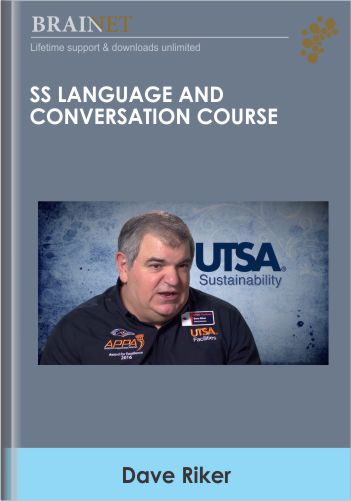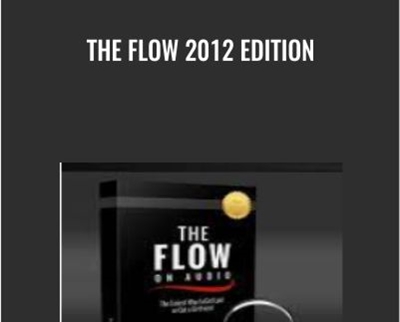$235.00 Original price was: $235.00.$49.00Current price is: $49.00.
Distilled to its essence, the ancient Greco-Roman philosophy known as Stoicism is a philosophy of personal betterment
 Purchase this course you will earn 49 Points worth of $4.90
Purchase this course you will earn 49 Points worth of $4.90Salepage link: At HERE. Archive: https://archive.is/wip/9Zhkz
Buy now $49 $235, Think Like a Stoic: Ancient Wisdom for Today’s World – Massimo Pigliucci Course.
Course Overview
Distilled to its essence, the ancient Greco-Roman philosophy known as Stoicism is a philosophy of personal betterment. It aims to help us navigate the challenges of our everyday existence and reflect on the broader meaning and direction of our lives. Unlike standard ethics, which focuses on answering questions about actions (“Is human cloning right or wrong?”), virtue ethics focus on our character (“How can I become a better person?”). Examining virtue ethics makes any exploration of Stoicism not just illuminating—but also incredibly personal, and possibly life-changing.
The Stoic life is defined by three fundamentals:
- We do not control as much as we think we do about the world and our lives.
- We can recover from calamity and disaster by focusing on what is in our power.
- We should live by the light of reason and community, rather than by wealth and fame.
And if you think this school of philosophy is relegated to ancient figures like Zeno, Marcus Aurelius, Epictetus, and Seneca, think again. We see Stoic ideals reflected in real-life heroes like Nelson Mandela and fictional ones like Spider-Man, as well as in the life of Massimo Pigliucci, the K.D. Irani Professor of Philosophy at the City College of New York, who knows first-hand just how transformative a Stoic approach to life can be.
Professor Pigliucci has designed Think like a Stoic: Ancient Wisdom for Today’s World as an enlightening introduction to the basics of Stoic philosophy, the history of Stoicism, and ways to incorporate its lessons in your own life. Over the course of 25 lessons, you’ll review the lasting influence of Stoic ideas through time, from Christianity to modern philosophy. You’ll explore the three parts of the classic Stoic curriculum and consider what it means to be a Stoic in the 21st century. Best of all, you’ll get to participate in workshops and exercises that make up a how-to manual for the modern Stoic. Yes, you’ll come away with an incredible wealth of knowledge about the history and principles of one of the most enduring philosophies of life—but you may also find your way to a more meaningful life for yourself.
Explore the Core Tenets of Stoicism
Stoicism began thousands of years ago with the philosopher Zeno, who, in the wake of a terrible shipwreck, developed a school of practical philosophy that would become analogous in scope to philosophies and faiths like Buddhism, Confucianism, and Christianity. At its core, Stoicism holds the belief that human beings are capable of reason and are inherently social animals.
Think like a Stoic: Ancient Wisdom for Today’s World rests on the two major pillars of Stoicism, under which you’ll consider the Stoic life as one that deploys reason for the improvement of society and one that asks us to live according to nature to make life better for everyone (and, therefore, ourselves as well).
- The Four Stoic Virtues. In Stoicism, positive personal change comes about by constantly practicing four habits, or virtues: practical wisdom, justice, courage, and temperance. Say your coworker is being harassed by the boss. Practical wisdom says this is a situation where you have to intervene (because it’s good for your character), justice lies in standing up to the boss, courage gives you the strength to do it, and temperance keeps your response to the boss within reasonable limits.
- The Dichotomy of Control. This second pillar of Stoic philosophy was famously summarized by the slave-turned-teacher Epictetus at the beginning of his manual for a good life, the Enchiridion. He wrote, “Some things are up to us, while others are not. Up to us are opinion, motivation, desire, aversion, and, in a word, whatever is of our own doing; not up to us are our body, our property, reputation, office, and, in a word, whatever is not of our own doing.”
The ancient Stoics also believed in the importance of cultivating life as if it were a “garden,” composed of ethics, physics, and logic to live a satisfying life. Over the 25 lessons of this course, you’ll spend time investigating the history and practical implications of these concepts. For example:
- The Stoic understanding of ethics was far broader than the study of right and wrong, encompassing questions about one’s goals and one’s relationship to other people;
- The Stoics believed that if we embraced the wrong understanding of the world (“physics”), we’d be likely to mis-live, since we’d live as if the world were different from what it is—a recipe for disaster; and
- The Stoics felt that logic—meaning sound reasoning—was another requirement of a well-lived life, because good thinking protects us from living according to nonsensical notions.
Meet (and Learn from) Great Stoic Minds
Role models were an integral part of the ancient Stoic approach to life. As such, Professor Pigliucci introduces you to a cast of bright and inspirational minds, individuals who either taught the principles of Stoicism or who embraced the Stoic ethos in their everyday lives.
In these lessons, you’ll get pointed perspectives on how these great philosophers and thinkers through their words and deeds can teach us to approach life in the 21st century. Here are a few of the luminaries you will meet and the wisdom they have to impart:
- Seneca, on Time Management. In one of the many letters he wrote, Seneca instructs his friend, Lucilius, on how to use time in the best way possible. He advised Lucilius: “Hold every hour in your grasp. Lay hold of to-day’s task, and you will not need to depend so much upon tomorrow’s. While we are postponing, life speeds by.”
- Epictetus, on Debating Others. Epictetus instructs us to respond to people with whom we disagree by not mocking or maligning them—or walking away. Instead, the Stoic patiently engages them and does their best to explain their own point of view, with the objective being dialogue, not dispute.
- Marcus Aurelius, on Assigning Labels. One way to make the world better is to be mindful of the labels we give ourselves. Marcus states, “When you have assumed these names—good, modest, truthful, rational, a man of equanimity, and magnanimous—take care that you do not change these names; and if you should lose them, quickly return to them.”
- Epictetus, on Desiring Things. Stoics like Epictetus felt freedom was achieved not by satisfying desire but by eliminating it. “The more we value things outside our control,” he notes, “the less control we have. … Either you’re going to be depressed when your wish is not realized or foolishly pleased with yourself if it is, overjoyed for the wrong reasons.”
Practical Solutions to the “Problems of Life”
Think like a Stoic: Ancient Wisdom for Today’s World includes numerous exercises you can incorporate into your life to retrain your mind to take on a more Stoic view of life and the world around you. Think of it as philosophy made (extremely) practical.
Inspired by the many Stoics you encounter in the 25 lessons of this course, here are some examples of the exercises:
- Re-describing objects of your desires in a more detached fashion that strips them of the value judgments we automatically impose (but that are not, in fact, part of them);
- Meditating at sunrise to remind yourself that you are interconnected with the rest of the cosmos, and would not even exist were it not for the reliability of the Sun; and
- Keeping a number of short phrases ready at hand as constant, easy reminders of what you should do as a Stoic practitioner when confronted with moments of weakness.
“To be a philosopher,” wrote Henry David Thoreau (himself influenced by Stoic principles), “is not merely to have subtle thoughts, nor even to found a school, but to so love wisdom as to live according to its dictates, a life of simplicity, independence, magnanimity, and trust. It is to solve the problems of life, not only theoretically, but practically.”
And in those wise words lies the ultimate goal of this very course.
25 Lectures
Average 27 minutes each
1How to Live like a Stoic Sage
2Stoicism from Heraclitus to Thoreau
3The Stoic Garden: Physics, Ethics, Logic
4How Stoics Understand Providence
5Using Stoic Ethics to Achieve Happiness
6The Stoics on Desire and Discipline
7The Stoics on Interacting with Others
8The Stoics on Decision-Making
9Seneca’s Letters to Lucilius
10Seneca on Anger Management
11Seneca on Grief and Distress
12Epictetus on the Importance of Reason
13Epictetus on Overcoming Fear
14Epictetus on Desire, Action, and Judgment
15Epictetus on How to Be Free
16A Manual for the Good Life: The Enchiridion
17Marcus Aurelius on Being Thankful
18Marcus Aurelius, Virtue, and the Vineyard
19Marcus Aurelius on Managing Turmoil
20From Stoic Self-Mastery to Cosmopolitanism
21Drawing Inspiration from Stoic Role Models
22How Stoics Bear Responsibility and Conflict
23Misusing and Misunderstanding Stoicism
24Stoicism for Everyday Life
25Four Family Problems and Stoic Solutions
Hide Full Lecture List
| Total size | |
|---|---|
| Language | |
| Author |
Only logged in customers who have purchased this product may leave a review.
Related products
Personal Development
= 18 Points
Personal Development
Rhode Island Mental Health & The Law – 2020 – Robert Landau & Frederic Reamer
= 83 Points
Personal Development
‘MAGNETIC INFLUENCE’ – Magnet for Money, Charisma, Confidence! – Dani Johnson
= 63 Points
Personal Development
= 33 Points
Personal Development
= 25 Points
Personal Development
= 62 Points
Personal Development
= 21 Points
Personal Development
= 35 Points













Reviews
There are no reviews yet.